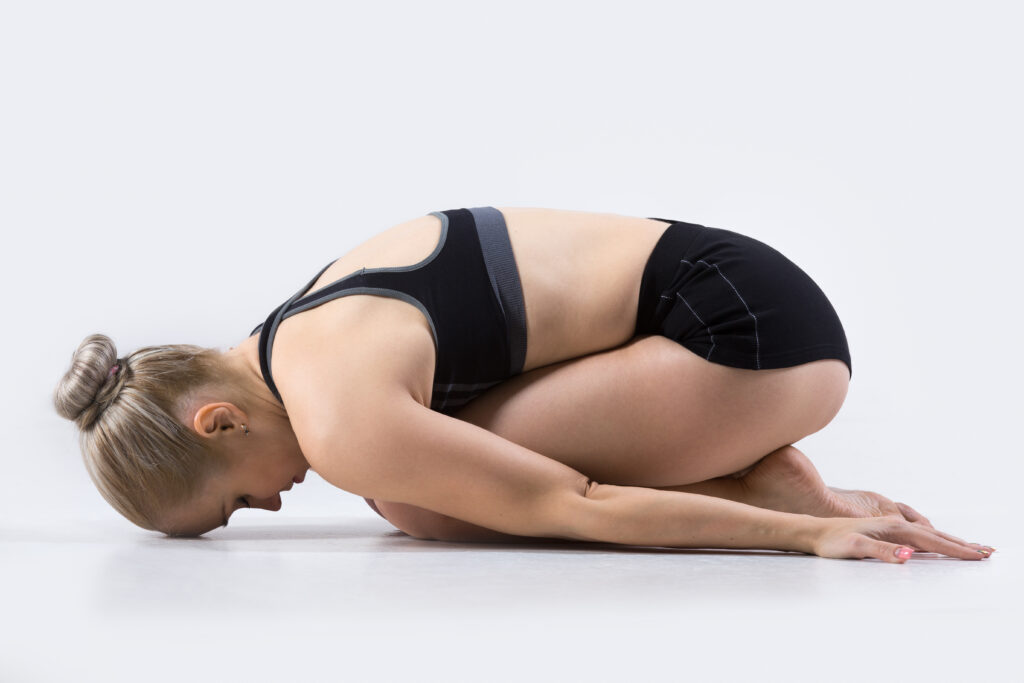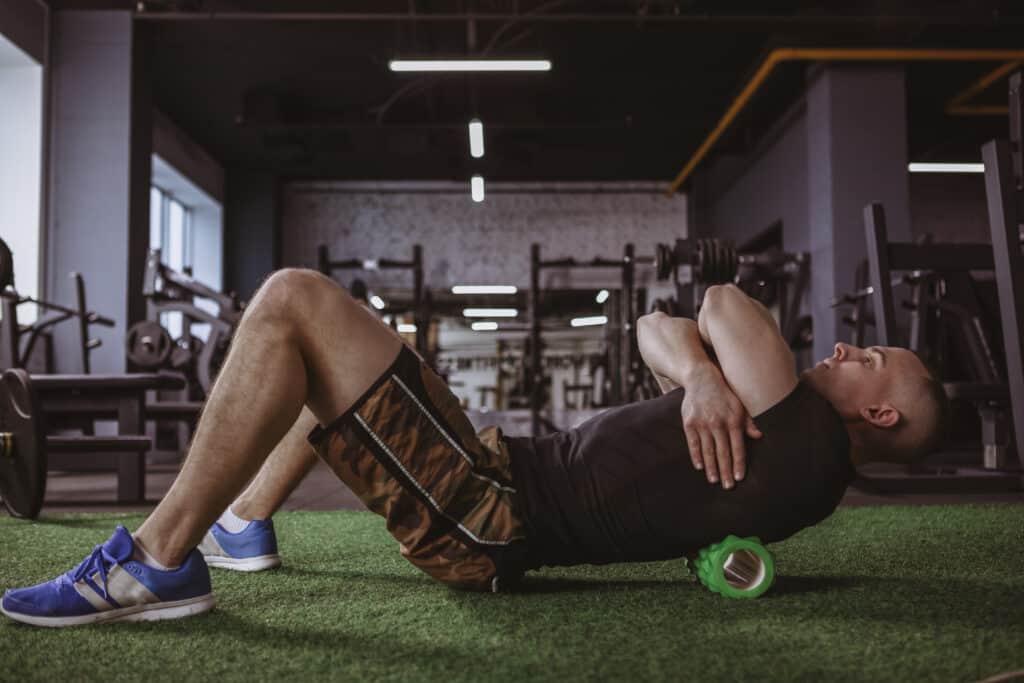Introduction
Stretching warms up your muscles and prepares you for weightlifting. While some people say stretches are overrated, they make your deadlifts more effective by improving joint mobility. Which ones should be part of your routine? Forget the well-known stretches and add the following eight underrated exercises to your pre-workout list.
1. Pigeon Pose
Yoga might not be on your radar for deadlift performance, but yoga increases flexibility and balance. The discipline has numerous poses to try. The pigeon pose boosts hip flexibility and posture. By opening up your hips, this stretch also helps glute activation and power generation during deadlifts.
How to Do the Pigeon Pose
- Start by getting on all fours.
- Bring your right knee forward.
- Cross your left knee over your right ankle.
- Keep your back straight and move your left leg as far back as possible.
- Hold the stretch for about 30 seconds while breathing in and out.
2. Plank Pose
Power yoga takes traditional yoga practice to the next level by elevating your heart rate and focusing on strength. If you want to build core strength, use the plank pose to protect your spine during the heaviest lifts. Each stretch helps your back muscles and reduces slouching, improving spinal alignment and posture.
How to Do the Plank Pose
- Lie flat on your stomach on a comfortable yoga mat.
- Raise your body into a pushup position and keep your back and legs in a straight line.
- Your shoulders should be above your wrists, and your hips should be in a straight line with the rest of your body.
- Engage your core to get the most from this stretch.
3. Thoracic Spine Extension
Thoracic spine extension is a straightforward exercise, though it requires a body weight and a foam roll. Weightlifters use this stretch to improve shoulder mobility and flexibility because the exercise targets the thoracic spine. You might not realize it, but thoracic spine extensions also help your breathing mechanics by opening the chest cavity.
How to Do Thoracic Spine Extensions
- Lay on your back on the floor.
- Bend your knees, placing both feet flat on the ground.
- Slightly lift your upper back to place a foam roller behind it.
- Place your hands behind your head for support, and move your legs to roll the foam roller up and down, stretching your chest and arching your back over the roller as you move.
- Move slowly to ensure the foam roller targets your back.
4. Wall Stretch
Sometimes, the simplest stretches are the most effective for your deadlifts. For instance, wall stretches target your chest and open up its cavity. If you stretch your rib cage, you can take deeper breaths and make heavy lifts more manageable. Wall stretches also benefit your shoulders by reducing the chances of impingement or compressed tendons.
How to Do a Wall Stretch
- Face a wall, stand straight and place both your hands on the wall.
- Bend your elbows to lean into the wall and stretch your chest and shoulders.
How to Do a Wall Calf Stretch
- Face the wall and keep your feet shoulder-width apart.
- Place your palms and the ball of your left foot against the wall and hold for 30 seconds.
5. Spider-Man Hold
Experts say about 65 million people experience back pain, so it’s essential to get creative with your stretches. Try the Spider-Man hold to enhance flexibility in your hips and thighs while targeting your lower back. Your body also benefits from improved ankle mobility and better balance. If you want a challenge, consider using a strength band to increase the resistance.
How to Do the Spider-Man Hold
- Lower your body into a pushup stance with your spine and legs aligned.
- Bring your right foot beside your right hand while maintaining your left leg’s position.
- Lower your torso toward the ground to stretch your hips and engage your core.
- Hold the position for 30 seconds before alternating legs.
6. Superman Hold
If you enjoy superheroes, there are more related underrated stretches to help your deadlift routine. The Superman hold is excellent for weightlifting because it targets your back, especially the posterior chain. Your glutes, hamstrings and erector spinae benefit from the pose through improved stability and a more efficient form.
How to Do the Superman Hold
- Start by lying flat on your stomach on the floor.
- Put your arms above your head.
- Simultaneously, raise your chest, legs and arms off the ground.
- Squeeze your glutes and core to get the most from this stretch.
- Do your best to lift your thighs higher off the ground and squeeze your shoulder blades.

7. Child’s Pose
The CDC says about one in six Americans does yoga. Another worthwhile pose to incorporate into your routine is the child’s pose, also known as balasana. This stretch decompresses the spine and opens up your lower back muscles. If the pigeon pose is too much for you, the child pose could be a solid alternative.
How to Do the Child’s Pose
- Set your knees on the ground and sit on your heels. Your big toes should touch one another, and your knees should be hip-width apart.
- Fold your body forward, keeping your abdomen between your thighs.
- Stretch your arms in front of you and touch the ground with your palms.
- Stretch forward enough to where your forehead meets the ground.
8. Hurdler Stretch
The hurdler stretch may feel awkward. However, correct execution can significantly impact your deadlift performance by targeting the hamstrings. When you stretch your hips and adductor muscles, you get more efficient deadlifts. Be careful when performing the hurdler stretch, as it could overwork your knees and increase the risk of injury.
How to Do the Hurdler Stretch
- Sit on the floor and place both legs in front of you.
- Bend your right leg and place it behind your back.
- Bend your left leg and pull it toward your groin.
- Fold your body over your left leg and extend your arms forward.
Stretches to Boost Your Deadlift Performance
Before you can hit deadlifts perfectly, you must increase your body’s flexibility and mobility through stretches. Stretching only requires a few minutes, yet it can be a game-changer for your hips, spine and lower back. While hip flexors and cobra stretches are popular, they only go so far — therefore, you should look for unconventional stretches to supplement your workout routine.
Jefit: Discipline Greatness in the Gym
If you’re serious about building muscle, tracking workouts, and reaching your fitness goals in 2025, the Jefit strength training app is the perfect tool to help you succeed. With over 20 million downloads and 12+ million users, Jefit is one of the best tracking apps for strength training. Recognized as the Best Fitness App of 2024 and featured in Men’s Health, PC Magazine, and USA TODAY, Jefit stands out with its user-friendly design, advanced workout tracking, and over 42,000 five-star ratings. Whether your goal is to gain strength, track progress, or optimize protein intake, Jefit has everything you need.
- Top Hip & Back Extension Exercises for Posterior Chain Power - April 23, 2025
- Best Exercises to Build Strong & Defined Shoulder Muscles - April 21, 2025
- Whey vs. Casein: What’s the Best Protein for Building Muscle - April 18, 2025
